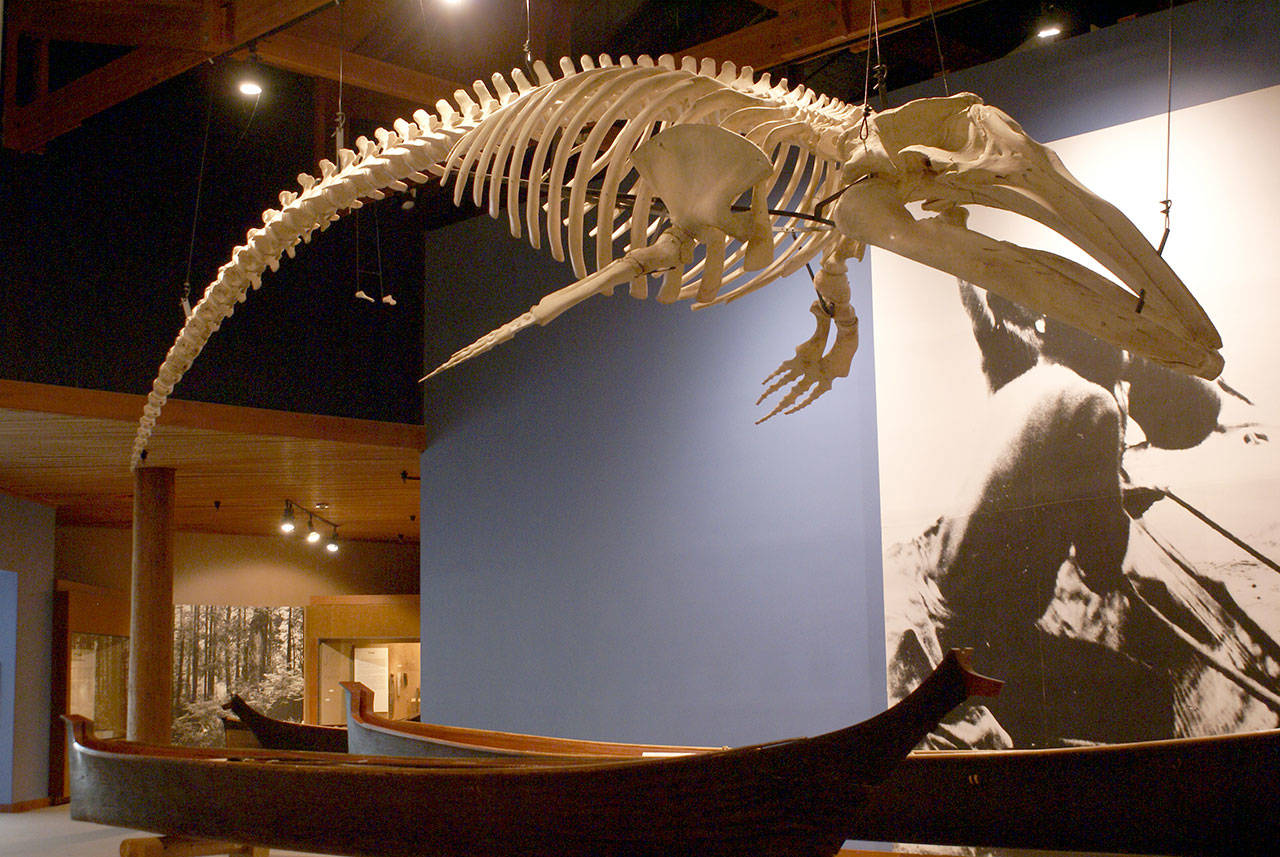NEAH BAY — The Makah Cultural and Research Center will become brighter now that it has received a $232,000 grant to improve its lighting system.
The museum at 1880 Bayview Ave. in Neah Bay, which has about 500 pre-contact artifacts from the Ozette village on display, has had the same lighting system since its doors opened in 1979, said Janine Ledford, project director.
That lighting system has proven to be a little dim, leaving visitors asking the museum to turn up the lights, she said.
“The problem is, in order to bring the light level up, we would be potentially doing damage to the artifacts,” she said.
The $232,000 grant from the National Endowment for the Humanities would allow the museum to turn the lights up without damaging the exhibits, she said.
Throughout the next few months, new LED lights will be installed throughout the museum, allowing people to see the contents more clearly.
“We can bring the light levels up so people can see the beauty of the artifacts,” Ledford said, pointing to Makah whaling gear, sealing gear and tools such as knives and chisels. “You’ll be able to see that workmanship better.”
She said the museum is visited by about 14,000 people every year, most during the summer.
Generally, the museum is open from 10 a.m. to 5 p.m., but a two-day closure is planned Tuesday and Wednesday, Ledford said.
After the closure, some sections will be temporarily inaccessible and not available for viewing. The goal, she said, is for the entire lighting project to be finished by May 1.
The museum features artifacts excavated from Ozette Village and their interpretation by Makah elders, whose stories and life experience brought both the artifacts and Makah traditions to the attention of visitors around the world, Ledford said.
“It’s the best preserved collection of its type in the western United States,” she said. “Thousands make their way to Neah Bay every year to learn about pre-contact life of the Makah people.”
She said a mudslide covered several houses in Ozette, the tribe’s southernmost village, and preserved the contents of the houses for hundreds of years.
Excavation began in 1970 in partnership with Washington State University, Ledford said.
“It’s something our tribe is incredibly proud of,” she said. “We have a wonderful collection of pre-contact culture.
“It belongs to the whole tribe, and we’re pleased to show the rest of the world how we thrived in this part of the country.”
For more information about the museum, see makahmuseum.com.
________
Reporter Jesse Major can be reached at 360-452-2345, ext. 56250, or at jmajor@peninsuladailynews.com.

